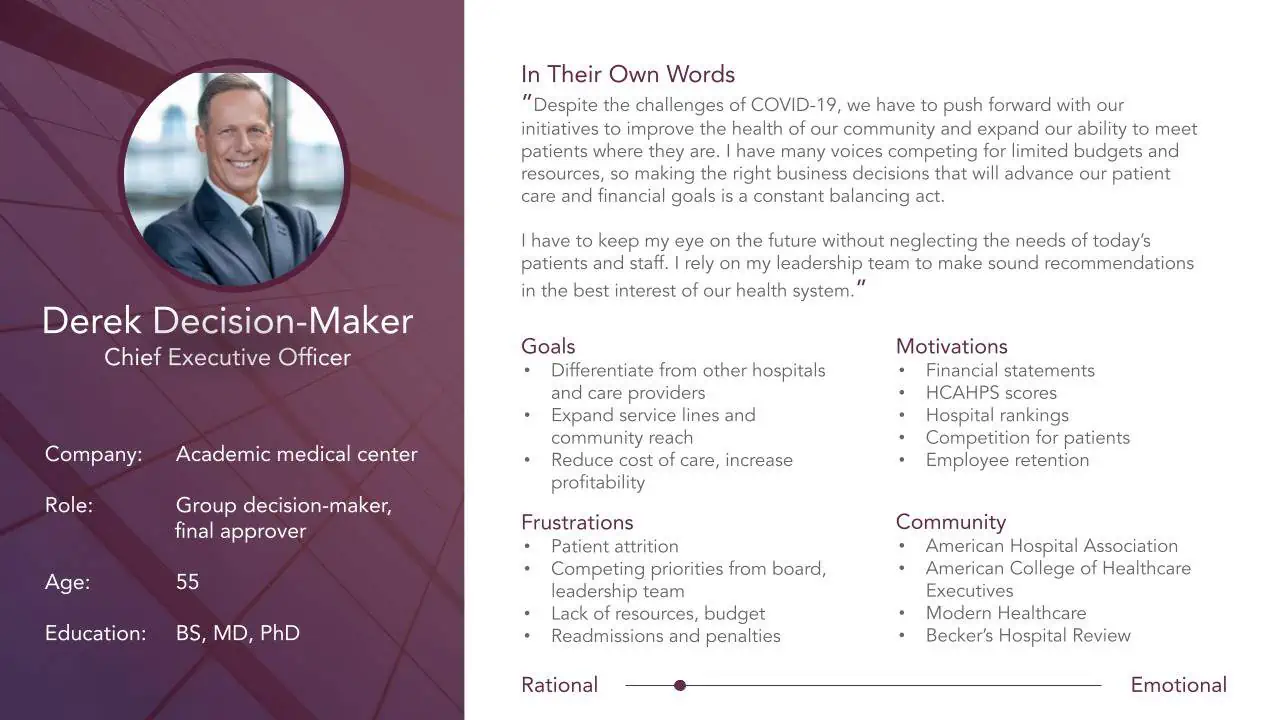A couple of weeks ago, I had the opportunity to hear from digital leaders from the likes of Amazon, Mayo Clinic, HCA Healthcare, VillageMD, and many others during the Modern Healthcare Digital Health Transformation Summit.
While the speakers offered lessons learned and best practices for increasing patient engagement, improving clinician adoption, and demonstrating better health outcomes, I was listening with my marketing hat on.
My purpose in attending this event is to help our health IT marketing agency clients overcome the challenges they face in positioning and marketing their products and services to health systems within the larger context of tight budgets and digital transformation.
Here are a few takeaways from the event, of which health tech marketing leaders should be aware and considering as they look to their brand strategy and product positioning.
Ideas impacting your health tech marketing strategy
 The makeup of health system boards is changing
The makeup of health system boards is changing
More health systems are inviting payers and individuals from fintech and other industries to sit on their boards. And, of course, as millennials age into senior leadership roles, digital solutions and the convenience they can offer patients have much more visibility at the health system board level than ever before.
New personas on the technology buying committee
With the emphasis on the consumer experience of healthcare, more health systems are including marketing leaders in technology buying decisions. For marketers, this means there’s a new role on the ever-growing buying committee, and you need to ensure there’s relevant content to meet their needs and include them in your target personas.
Health systems have product teams
This is probably the biggest idea that’s not on most marketers’ radars. Large health systems are developing their own innovations and solutions to meet their specific needs. If your company is selling a point solution, this is a significant barrier to entry that you must be aggressively messaging against.
Streamlining technology stack with intention
Speaking of point solutions, large health systems bought a lot of them in recent years. The chief medical officer from Rush University Medical Center shared that his organization placed a moratorium on buying new tech solutions so that they could take a step back and develop guiding principles for future purchases. Health tech companies must demonstrate how to solve the health system’s problem and complement, not compete with, existing architecture.
Tried and true marketing best practices win the day
Attending this event was also a good reminder about just how busy those in the healthcare C-suite are and rising above the noise is a must for marketers.
Here are some B2B marketing truisms I heard reinforced throughout the event.
Screening out the noise

Demonstrating success
One panelist declared, “Show me a customer I know.” Case studies, testimonials, and peer recommendations are still the most reliable way to capture the attention of your buyers. From media articles, PR, and social, to networking events and conferences, hearing from someone solving the same problem is what will get you close to the coveted demo stage.
Focusing on the problem
Your technology is cool? Great, nobody cares. No, the C-suite really does not care. One speaker summed it up best: what matters to me in the long term is solving my problem, not buying your solution. Marketers that love to talk about themselves should take note!
 The makeup of health system boards is changing
The makeup of health system boards is changing